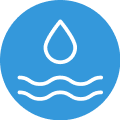MaP: Testing Popular Toilet Models for Efficiency
Testing and rating the water efficiency of today’s toilet models plays an indispensable role in promoting meaningful water conservation in the residential sector. As toilets represent the single largest source of indoor water usage, ensuring new models deliver maximum efficiency over their lifetime is crucial for environmental sustainability.
Testing programs like the Maximum Performance (MaP) toilet testing developed specifically for the North American market have become the gold standard that utilities and municipalities rely on. These rigorous protocols set clear benchmarks for real-world performance, directly drive engineering innovations to elevate product design, and provide the verified ratings consumers need to make informed, high-impact purchases.

Water Savings Potential of High-Efficiency Toilets
Toilets account for nearly 30% of household water demand, constituting the largest localized usage within homes. Outdated water-guzzling models still in operation use over 3 gallons per flush, adding up to 20 gallons per person per day on average. Replacing aging units with new high-efficiency toilets (HETs) incorporating precision engineering can cut the average flush volume to under 1.28 gallons – the maximum threshold to qualify for EPA’s WaterSense certification.
For a family of four, installing a 1.28 gallons per flush toilet compared to an outdated 3 gallons per flush model saves over 8,000 gallons per person per year. This conservation effect accumulates to over 30,000 gallons saved for the average household annually. Testing provides real-world usage data and waste removal performance metrics to quantify actual water reduction across proposed replacement initiatives.
Key MaP Indicators for Testing Toilet Efficiency
MaP developed special testing gauges – Toilet Map Testing key indicators like:
Average flush volume (gallons per flush) – Directly linked to water usage.
Waste removal effectiveness and clog resistance – Impacts need for multiple flushes.
Leak prevention between flushes – Minimizes wasted water from leaks.
Durability of efficiency over years of simulated use – Sustains savings over product lifetime.
Flush capability satisfaction – Ensures consumer adoption and replacement of older units.
MaP testing also utilizes grams per flush waste removal ratings, with scores over 800g indicating excellent one-flush performance and reliability.
Process of Toilet Testing Protocols
MaP toilet testing methodology includes:
Flow meters – Quantify average water volumes used per flush to permit accurate gallons per flush ratings.
Sensor gauges – Evaluate waste removal effectiveness after flushes, detecting the need for second flushes.
Years of simulated usage – Tests sustained efficiency after the equivalent of a decade of residential family usage.
Controlled lab settings allow precise measurements, while modelled households mimic real-world bathroom conditions over thousands of test flushes.
Key Insights on Improving Toilet Reliability
While some models meet initial efficiency and performance metrics upon launch, MaP’s expanded testing often reveals engineering issues causing failures to emerge over time with sustained family usage. Models exhibiting precipitous drops in waste removal capability after years of use highlight vulnerabilities in maintaining efficiency as components degrade. Comparing verified ratings after exposure to durability testing helps consumers differentiate true sustained efficiency in their selections.
The granular insights gathered by MaP’s comprehensive toilet testing protocols allow objective evaluation of the flush performance, water conservation capabilities, and durability of models already widely installed across North America. The independent benchmarking directly informs manufacturing investments in engineering improvements to exceed MaP thresholds as rated efficiency leaders. With municipalities increasingly requiring MaP testing for infrastructure upgrade incentives and efficiency program participation, meeting evolving benchmarks enables sustainable toilet technology to outcompete dated offerings.
Purchase Guidance: Seeking Out Top-Rated WaterSense and MaP Certified Models
Equipped with third-party data on toilet performance, consumers gain the power to make selections yielding substantive, lasting water savings for their households and communities. Shoppers should look for toilets carrying the EPA’s WaterSense label, certifying flush volumes meet the 1.28 gallons per flush maximum.
Checking the toilet MaP ratings given to models based on grams per flush removal scores then allows comparison to opting for superior waste clearance capability. Combined with upfront purchase rebates from local utilities, focusing selections on the highest efficiency toilet models validated through MaP’s rigorous testing procedures ensures maximized water conservation benefits over the product lifetime.
Through standardized testing that continuously raises the bar on product innovations, achieving increased toilet water efficiency and reliability becomes the new normal rather than the exception. Promoting further participation by manufacturers and consumers constitutes a major opportunity for sustainable water usage in the residential sector.
